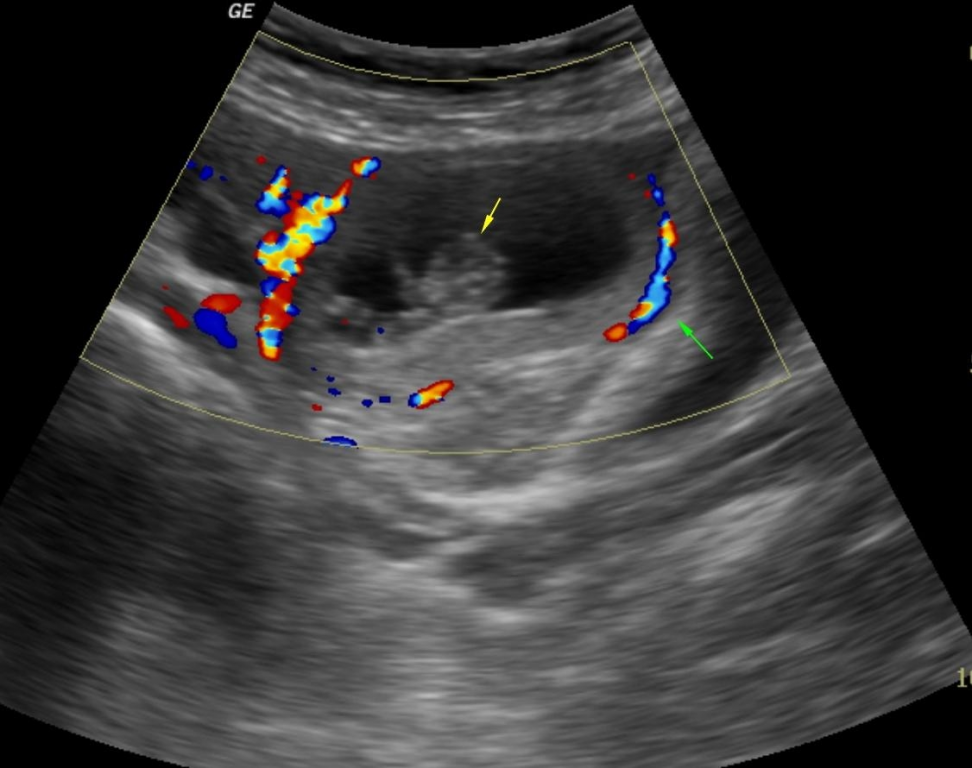Corpus luteum

The corpus luteum (plural: corpora lutea) is a temporary endocrine structure involved in ovulation and early pregnancy.
During ovulation, the primary follicle forms the secondary follicle and subsequently the mature vesicular follicle.
At ovulation the follicle ruptures expelling the ovum into the fallopian tube. The remnants of the follicle after ovulation is referred to as the corpus luteum and ranges from 2-5 cm in diameter but involutes as it matures. The corpus luteum produces estrogen and progesterone, maintaining optimum conditions for implantation if the ovum is fertilised:
- fertilised: the corpus luteum continues to produce these hormones and maximizes the chance of implantation into the endometrium; it reaches a maximum size at ~10 weeks and finally resolves at around 16-20 weeks
- not fertilised: the corpus luteum involutes and turns into a corpus albicans by around 2 weeks
In some instances (especially in twin pregnancies), there may be more than one corpus luteum - (e.g. two corpora lutea)
Radiographic features
Ultrasound
The corpus luteum is a thick walled cyst with characteristic "ring of fire" peripheral vascularity. It usually has a crenulated inner margin and internal echoes.
Differential diagnosis
General considerations include:
- adnexal ectopic pregnancy
- ectopic pregnancy is more echogenic than the ovary in 77-88%
- corpus luteum is more echogenic than the ovary in ~3%
- ovarian neoplasm
History and etymology
The term "corpus luteum" is derived from the Latin meaning "yellow body" where "corpus" means body and "luteum" means yellow. The corpus luteum eventually involutes into the "corpus albicans" ("white body").
Related pathology
Siehe auch:
und weiter:

 Assoziationen und Differentialdiagnosen zu Corpus luteum:
Assoziationen und Differentialdiagnosen zu Corpus luteum:


